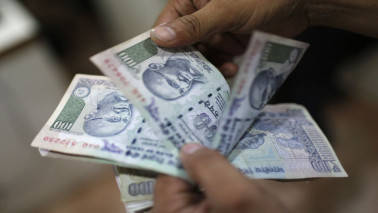Taking steps to lower claims ratio; Challenges are motor, health: New India Assurance
G Srinivasan said that the IPO will have 80 percent secondary issue and 20 percent primary issue.

New India Assurance, the largest general insurance company in the country, is coming out with its initial public offering (IPO) that will open on November 1 and close on November 3. In an interview with M Saraswathy of Moneycontrol, G Srinivasan, Chairman and Managing Director, New India Assurance talks about the IPO and strategies to bring down loss ratios. Edited excerpts:
How much stake will the government dilute through the IPO?
At this point of time, the IPO consists of 80 percent secondary issue and 20 percent primary issue. Post the IPO, the government’s holding will come down to 85.5 percent.
There is a regulation that the public holding should be 25 percent in a certain number of years. So that will certainly happen.
The underwriting losses are a matter of concern, though there has been an improvement in the combined ratio. What are your steps on that front?
The combined ratio for Q1 of FY18 was at 110.66 percent and it is clearly moving in the right direction. We are taking a lot of steps to bring down the claims ratio. The challenge areas are motor and health.
We have done a lot of re-pricing in the corporate and retail health segments. We also put in a lot of claims control measures like recruiting doctors. Further, there is also the common third party administrator (TPA) that is scaling up which will give us large economies in terms of better rates from hospitals.
Hasn’t the motor third party segment seen an improvement in terms of lower losses?
In the motor third party segment, the premium increase that is happening every year has improved the situation. The Motor Vehicles Amendment Bill that is in the Parliament is also a positive development and is expected to bring down the number of accidents on Indian roads. This bill has also set a time limit of six months for filing claims and has a mechanism for quicker settlement of claims.
What are the steps taken to bring down the combined ratio to below 100 percent?
The adjusted combined ratio is more relevant for Indian companies. This is because companies like us have large technical reserves which produce investment income. So, this is a part of the core insurance operation. It is already at 95 percent and as claims improve, it will come down further.
Loss-making segments like fire have now reported operating profits. What has the company done to reduce high claim ratios?
We have been involved in better risk selection. In the coming periods as well, they will show better results with better pricing and better underwriting. This strategy has been paying off and we will continue to leverage on that.
What are the international expansion plans of New India?
We operate in 28 countries and have been profitable. We have plans to get into Myanmar and already have a representative office there. We are planning to get into the special economic zone shortly. In areas like Qatar and Dubai, it is in progress. Our strategy will be to strengthen the current markets and expand further.
Has your business in GIFT City progressed well?
At GIFT City in Gujarat, we are doing well. New India provides reinsurance cover to the international markets. However, GIFT will progress further with more companies coming into the market. It has a huge opportunity and its full potential will be realised in the next one to two years.


















